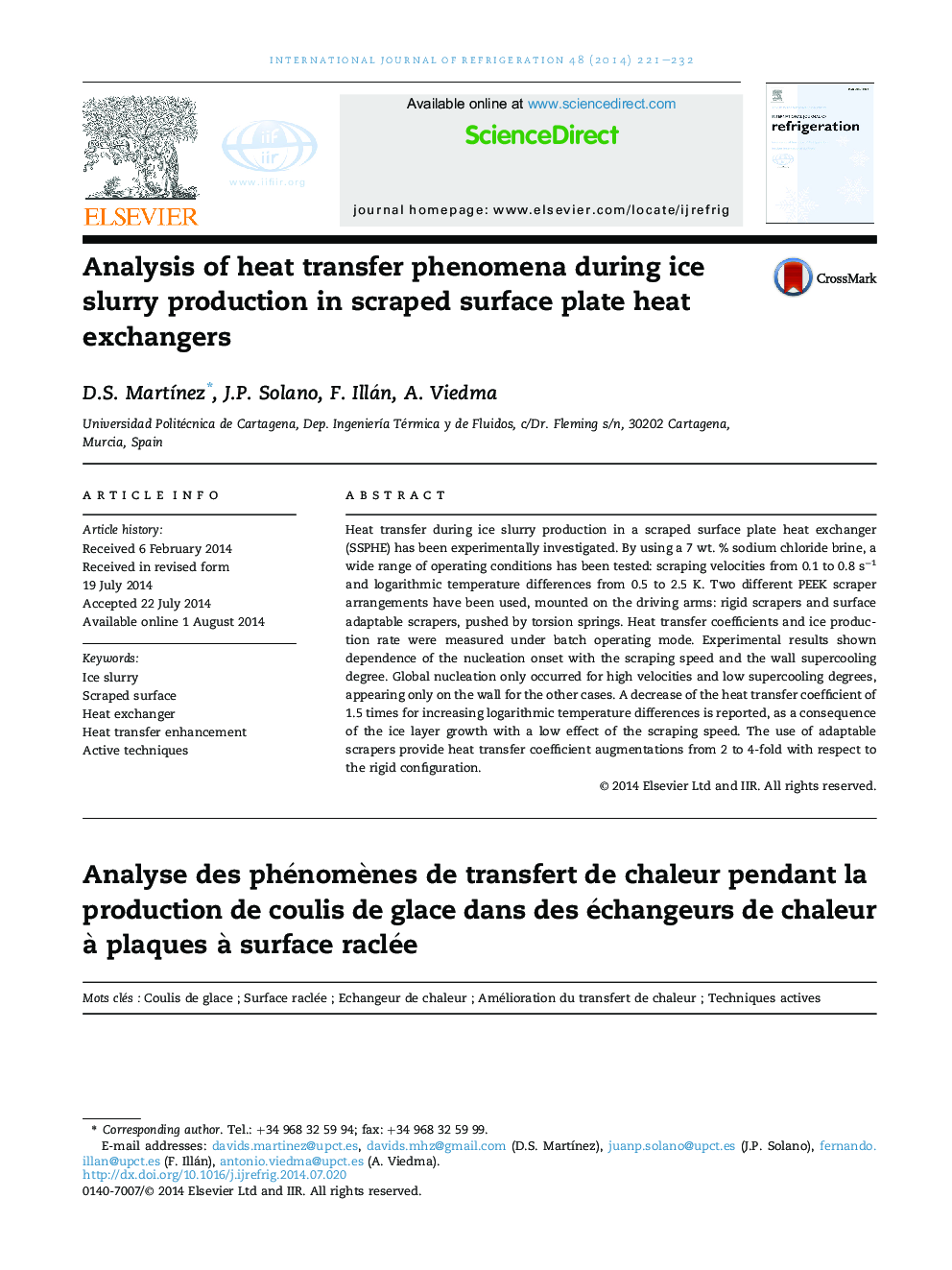| Article ID | Journal | Published Year | Pages | File Type |
|---|---|---|---|---|
| 786890 | International Journal of Refrigeration | 2014 | 12 Pages |
•Ice slurry from H2O + NaCl brine is produced in a scraped-surface plate heat exchanger.•We tested two different types of scrapers, rigid and surface-adaptable.•Adaptable scraper augments heat transfer coefficient by a factor of 2.•The scraping velocity has a low effect on the heat transfer.•The coolant temperature influences an ice layer formation, affecting the heat transfer.
Heat transfer during ice slurry production in a scraped surface plate heat exchanger (SSPHE) has been experimentally investigated. By using a 7 wt. % sodium chloride brine, a wide range of operating conditions has been tested: scraping velocities from 0.1 to 0.8 s−1 and logarithmic temperature differences from 0.5 to 2.5 K. Two different PEEK scraper arrangements have been used, mounted on the driving arms: rigid scrapers and surface adaptable scrapers, pushed by torsion springs. Heat transfer coefficients and ice production rate were measured under batch operating mode. Experimental results shown dependence of the nucleation onset with the scraping speed and the wall supercooling degree. Global nucleation only occurred for high velocities and low supercooling degrees, appearing only on the wall for the other cases. A decrease of the heat transfer coefficient of 1.5 times for increasing logarithmic temperature differences is reported, as a consequence of the ice layer growth with a low effect of the scraping speed. The use of adaptable scrapers provide heat transfer coefficient augmentations from 2 to 4-fold with respect to the rigid configuration.
Graphical abstractFigure optionsDownload full-size imageDownload as PowerPoint slide
